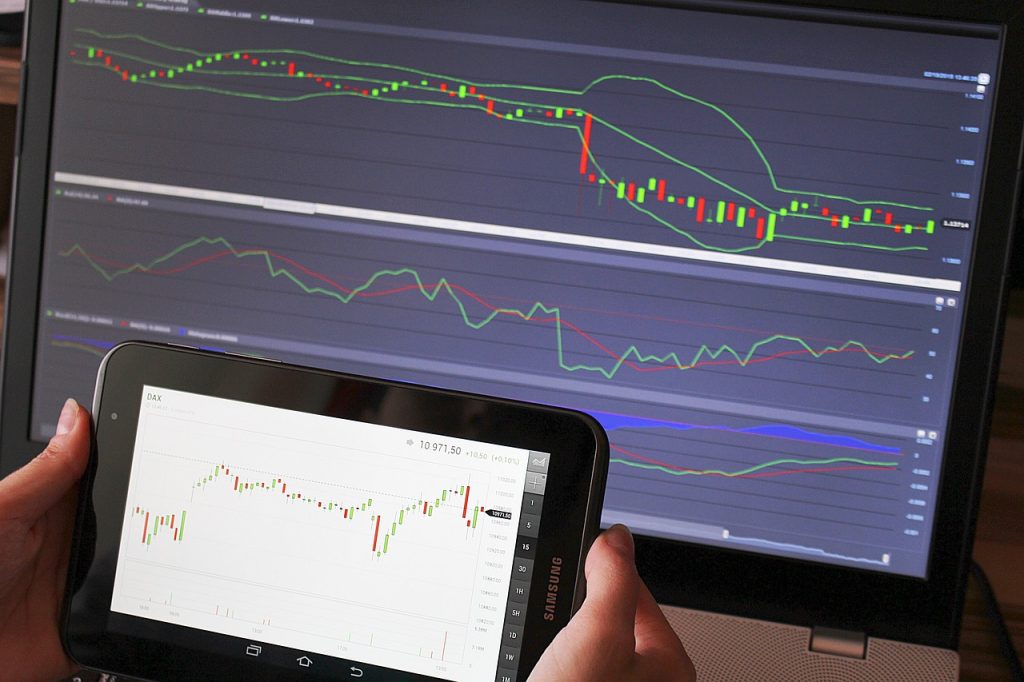Are you a beginner in the world of forex trading? If so, you’re in the right place! In “The Ultimate Forex Trading Strategy Guide for Beginners,” we will provide you with a comprehensive overview of forex trading strategies specifically tailored for those starting out. From understanding the basics of fx trading to discovering the best forex strategy for beginners, this guide will equip you with the knowledge and tools you need to navigate the exciting world of trading foreign exchange. So, get ready to embark on your forex trading journey with confidence and set yourself up for success!
I. Introduction
Welcome to the Ultimate Forex Trading Strategy Guide for Beginners! If you’ve always been curious about trading foreign exchange (forex) and want to learn how to navigate the exciting world of forex trading, you’ve come to the right place. In this comprehensive guide, we will break down all the essential concepts, terminology, and strategies to help you develop a solid foundation in forex trading.
II. Understanding Forex Trading
A. What is Forex Trading
Forex trading, also known as FX trading, is the buying and selling of currencies on the foreign exchange market. The forex market is the largest and most liquid financial market globally, with trillions of dollars traded daily. It operates 24 hours a day, five days a week, allowing traders to engage in currency trading at any time.
B. How Does Forex Trading Work
forex trading involves speculating on the price movements of currency pairs. A currency pair represents the exchange rate between two currencies, such as the EUR/USD (Euro/US Dollar). Traders aim to profit by buying a currency pair at a lower price and selling it at a higher price or vice versa. This is done through online trading platforms provided by forex brokers.
C. The Benefits of Forex Trading
Forex trading offers several advantages that attract both beginner and experienced traders. It provides high liquidity, allowing for easy entry and exit into trades. The forex market also offers a wide range of currency pairs to trade, providing opportunities in various global markets. Additionally, forex trading provides leverage, enabling traders to control larger positions with smaller amounts of capital.
D. Key Forex Trading Terminology
To navigate the forex market successfully, it’s essential to familiarize yourself with key forex trading terminology. Some important terms include:
- Pip: The smallest unit of price movement in a currency pair.
- Lot: A standardized trading volume in forex. Standard lots are typically 100,000 units of the base currency.
- Spread: The difference between the buying and selling price of a currency pair.
- Margin: The amount of money required to open and maintain a position.
- Stop Loss: An order placed to automatically close a trade at a predetermined price level to limit potential losses.

III. Essential Forex Trading Concepts
A. Understanding Currency Pairs
In forex trading, currencies are always traded in pairs. Each currency pair has a base currency and a quote currency. Understanding how currency pairs are quoted and how they move is crucial for effective trading. The base currency represents one unit, while the quote currency shows the corresponding amount needed to purchase one unit of the base currency.
B. Market Hours and Sessions
Unlike traditional financial markets, the forex market operates 24 hours a day. However, it is divided into different trading sessions, namely the Asian, European, and North American sessions. Each session has distinct characteristics, and the overlap between sessions can often provide increased trading opportunities.
C. Major Forex Market Players
Several key players influence the forex market. These include central banks, commercial banks, multinational corporations, and individual traders. Understanding how these participants trade and the impact they have on the market can help you make more informed trading decisions.
D. Types of Forex Orders
Forex traders can execute different types of orders to enter or exit positions. Common order types include market orders, limit orders, stop orders, and trailing stop orders. Each order type has its own purpose and execution criteria, providing traders with flexibility and control over their trades.
IV. Setting Up a Forex Trading Account
A. Choosing the Right Forex Broker
Selecting a reputable forex broker is crucial for a smooth trading experience. Consider factors such as regulation, trading platforms offered, customer support, fees and commissions, and available educational resources. Take your time to research and compare different brokers before making a decision.
B. Registration and Verification Process
Once you’ve chosen a forex broker, you’ll need to complete the registration and verification process. This typically involves providing your personal information, including proof of identification and address. The broker will verify your details to ensure compliance with regulatory requirements.
C. Account Types and Leverage
Forex brokers offer various types of trading accounts, such as standard or mini accounts. Each account type has different minimum deposit requirements and trading conditions. Additionally, brokers offer leverage, which allows traders to control larger positions with a smaller initial investment. However, leverage can amplify both profits and losses, so it’s important to use it judiciously.
D. Funding Your Trading Account
After your forex trading account is set up, you’ll need to fund it. Brokers offer multiple funding options, including bank transfers, credit/debit cards, and online payment processors. Choose the method that suits you best and ensure you have sufficient funds to start trading.

V. Developing a Trading Plan
A. Identifying Personal Goals and Risk Appetite
Before diving into forex trading, it’s essential to identify your personal goals and risk appetite. Determine whether you’re trading for income, capital appreciation, or to diversify your investment portfolio. Assess your risk tolerance and establish how much capital you’re willing to risk on each trade.
B. Determining the Trading Timeframe
different trading timeframes suit different trading styles. Short-term traders may prefer scalping or day trading, while long-term traders may opt for swing trading or position trading. Consider your availability, trading preferences, and the amount of time you’re willing to commit to analyzing the market.
C. Selecting the Right Trading Strategy
There are various trading strategies available to forex traders. Some popular strategies include trend following, range trading, breakout trading, and news trading. Evaluate each strategy’s strengths and weaknesses, and choose one that aligns with your trading goals and risk tolerance.
D. Implementing Money and Risk Management
Money and risk management are crucial aspects of forex trading. Set clear guidelines on the maximum percentage of your trading capital you’re willing to risk on each trade. Additionally, develop strategies for setting stop-loss and take-profit levels, as well as determining proper position sizes. Proper money and risk management help preserve capital and protect against excessive losses.
VI. Technical Analysis for Forex Trading
A. Key Candlestick Patterns
Candlestick patterns are visual representations of price movements in the forex market. They provide valuable insights into market sentiment and potential trend reversals. Learning to recognize and interpret key candlestick patterns, such as engulfing patterns, doji, and hammer patterns, can enhance your technical analysis skills.
B. Popular Technical Indicators
Technical indicators are mathematical calculations applied to price data to identify trends, patterns, and potential entry or exit points. Commonly used technical indicators include moving averages, the Relative Strength Index (RSI), the Moving Average Convergence Divergence (MACD), and the Bollinger Bands. Experiment with different indicators and find those that complement your trading strategy.
C. Trend Analysis and Moving Averages
Trend analysis is a crucial component of technical analysis. Identifying and following trends can help traders make informed decisions about entering or exiting trades. Moving averages are valuable tools used to highlight trends and smooth out price data. They provide a clear visual representation of whether a market is trending upwards, downwards, or moving sideways.
D. Support and Resistance Levels
Support and resistance levels are price levels where buyers or sellers are anticipated to enter or exit the market. These levels help traders identify potential areas of buying or selling pressure. By analyzing historical price data, traders can identify significant support and resistance levels to make more accurate trading decisions.

VII. Fundamental Analysis in Forex Trading
A. Economic Indicators and News Events
Fundamental analysis involves analyzing economic indicators and news events to understand their impact on currency movements. Key economic indicators include GDP growth rates, inflation rates, interest rates, and employment data. Paying attention to scheduled news events, such as central bank announcements and economic data releases, can provide valuable insights into market sentiment and potential trading opportunities.
B. The Impact of Central Banks
Central banks play a crucial role in forex markets. Their decisions regarding interest rates, monetary policies, and intervention can significantly impact currency values. Monitoring central bank policies, statements, and interventions can help traders anticipate potential market movements and adjust their trading strategies accordingly.
C. Interpreting Economic Data
Understanding how economic data affects currency markets is essential for fundamental analysis. Positive economic data can strengthen a currency, while negative data can lead to currency devaluation. Traders need to interpret economic data releases in conjunction with market expectations and historical trends to make informed trading decisions.
D. Using Fundamental Analysis in Trading
Incorporating fundamental analysis into your trading strategy can help you better understand long-term trends and make more informed trading decisions. By combining fundamental analysis with technical analysis, you can gain a comprehensive view of the market and increase your trading success.
VIII. Developing a Forex Trading Strategy
A. Long-term vs Short-term Trading
Forex traders can choose between long-term or short-term trading approaches, depending on their preferences and trading goals. Long-term trading involves holding positions for several weeks or months, focusing on larger market trends. Short-term trading, on the other hand, involves entering and exiting positions within a few hours or days to capitalize on short-term price fluctuations.
B. Trend Following Strategy
A trend following strategy aims to identify and trade with the prevailing market trend. Traders using this strategy pay close attention to moving averages, trendlines, and chart patterns to enter trades in the direction of the overall market trend.
C. Range Trading Strategy
In range trading, traders identify price ranges where a currency pair has been trading within. They look to buy near support levels and sell near resistance levels. This strategy is suited for market conditions where the price is consolidating and lacks a clear trend.
D. Breakout Strategy
Breakout trading involves identifying key levels of support or resistance and entering trades when price breaks out of these levels. Traders using this strategy aim to capture significant price moves that occur after periods of consolidation.

IX. Testing and Implementing the Trading Strategy
A. Setting up a Demo Trading Account
Before implementing your trading strategy, it is recommended to test it in a risk-free environment. Many forex brokers offer demo trading accounts that allow you to practice trading with virtual funds. Utilize this opportunity to familiarize yourself with the trading platform and test your strategy without risking real money.
B. Backtesting Your Strategy
Backtesting involves applying your trading strategy to historical price data to evaluate its performance. By simulating trades based on past data, you can assess the profitability, win rate, and drawdowns of your strategy. Backtesting helps identify potential weaknesses and allows you to make necessary adjustments before implementing your strategy in live trading.
C. Forward Testing and Live Trading
Once you’re satisfied with the results of your backtesting, it’s time to move on to forward testing. Implement your strategy in a live trading environment using small position sizes. Monitor its performance closely and make any necessary adjustments based on real-time market conditions.
D. Analyzing and Adjusting the Strategy
Continuous analysis and adjustment are essential for the long-term success of your forex trading strategy. Regularly review your trading results and analyze whether your strategy is consistently profitable. Identify areas of improvement and make adjustments accordingly. Remember, forex markets are dynamic, and adaptability is crucial for staying ahead.
X. Forex Trading Psychology
A. Overcoming Greed and Fear
Greed and fear are two emotions that can negatively impact your trading decisions. Greed may lead to excessive risk-taking and failure to stick to your trading plan, while fear may result in missed trading opportunities. Learning to manage these emotions and maintain discipline is key to successful forex trading.
B. Developing Discipline and Patience
Discipline and patience are essential virtues for forex traders. Stick to your trading plan and strategy, even during periods of losses or drawdowns. Avoid impulsive trading decisions and practice patience in waiting for high-probability trading setups.
C. Managing Emotions and Avoiding Bias
Emotional trading and bias can cloud your judgment and lead to poor decision-making. Be aware of your emotional state while trading and take breaks when necessary. Avoid biased thinking and rely on objective analysis to make trading decisions.
D. Continuous Learning and Adaptation
Forex markets are continually evolving, and as a trader, it’s important to stay updated with market trends and developments. Invest in your trading education, attend webinars or seminars, and keep abreast of the latest news and analysis. Continuously learning and adapting to market changes will contribute to your long-term success as a forex trader.
Now that you have a comprehensive understanding of essential forex trading concepts, strategies, and psychology, you’re ready to embark on your forex trading journey. Remember, forex trading requires dedication, practice, and continuous learning. Stay disciplined, manage your risk well, and always strive for improvement. Happy trading!


